by Inge Anderson
In genuinely chronological Bible, many of which are available on Amazon, all Scripture is arranged according to the order in which events occurred. That means, for instance, that individual Psalms are mixed in with other books. The books of Kings and Chronicles are interwoven with each other, as well as the minor and major prophets. So the return of the Israelites from Babylon comes after Daniel, rather than before. And all four gospel accounts are woven together. You can see how this works by downloading the chronological reading plan for the ESV Bible. (You will find some Bibles that only have books arranged in chronological order, and I don’t believe they’re worth buying.)
A chronological bible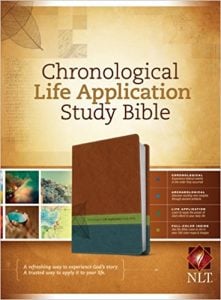 offers a great reading/study experience, but is not practical to carry to church or for looking up texts, even though I’ve been known to do it, because I treasure my Tutone brown Chronological Life Application Study Bible so much. This particular chronological Bible combines the advantages of a chronological bible with a study bible and a Life Applications bible. It is presented in chronological order, and the “study” portion provide background to what I am reading, which includes historical and geographical, sociological background, etc. And the Life Applications portions provides thoughtful content to help me apply what I am reading to my own life. And, of course, the New Living Translation is written in modern English, which is a fresh take on the Bible and seems faithful to the original content, even compared with the KJV. In short, I highly recommend this bible, although you might want to pick up a newer edition. (I own both the Tutone edition and the Kindle edition. My husband and I used the Kindle edition to read together for family worship.)
offers a great reading/study experience, but is not practical to carry to church or for looking up texts, even though I’ve been known to do it, because I treasure my Tutone brown Chronological Life Application Study Bible so much. This particular chronological Bible combines the advantages of a chronological bible with a study bible and a Life Applications bible. It is presented in chronological order, and the “study” portion provide background to what I am reading, which includes historical and geographical, sociological background, etc. And the Life Applications portions provides thoughtful content to help me apply what I am reading to my own life. And, of course, the New Living Translation is written in modern English, which is a fresh take on the Bible and seems faithful to the original content, even compared with the KJV. In short, I highly recommend this bible, although you might want to pick up a newer edition. (I own both the Tutone edition and the Kindle edition. My husband and I used the Kindle edition to read together for family worship.)
Below are some samples of genuine chronological bibles:
Chronological Bibles on Amazon.
You can also find “One Year Chronological Bibles,” and ones listed as “Daily Bible.” The “one-year” and “Daily” Bibles are arranged with daily readings which help you to read through the Bible in one year, some of them with dates, such as January 1, January 2, etc. (Others say, “Day 1, Day 2” etc.) If you choose such a Bible, carefully read through the description and the reviews to see what you are getting.
I prefer a chronological Bibles that is not advertised as a “one-year” Bible, to allow for the flexibility of spending more time on some passages than others and not reading just to finish the year. Combining reading with study has often taken me three years to get through the bible.
If you don’t live in the US, it may be more difficult to find a chronological Bible. You would have to check your local Bible stores. You can probably purchase a Chronological Bible in a Kindle version from Amazon. The good thing about Kindle books, including bibles, is that you can download it to check it out and easily return it if it doesn’t meet your needs. (Just don’t wait too long!)
Study Bibles
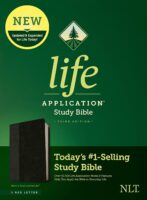 If you cannot get a Bible arranged in true chronological fashion, it may be more practical to get a good Study Bible and read books of the Bible more or less in chronological order and note how the different biblical accounts fit together. A study Bible will have introductions to each book and will provide some historical background. You can find lots of Study Bible on Amazon. However, if you want a physical Bible, you might want to check it out in a physical store, so you can handle it and examine its readability. You can return a physical bible to Amazon if it doesn’t meet your needs, but it’s not as easy as returning a Kindle version.
If you cannot get a Bible arranged in true chronological fashion, it may be more practical to get a good Study Bible and read books of the Bible more or less in chronological order and note how the different biblical accounts fit together. A study Bible will have introductions to each book and will provide some historical background. You can find lots of Study Bible on Amazon. However, if you want a physical Bible, you might want to check it out in a physical store, so you can handle it and examine its readability. You can return a physical bible to Amazon if it doesn’t meet your needs, but it’s not as easy as returning a Kindle version.
For serious study, it is best to stick to “formal equivalence” translations – that is translations that try to stick closely to the wording as used in the Bible without a lot of interpretation. Examples are the KJV, the NKJV, the ESV (English Standard Version) and the NASB. It’s always good to have one of these to compare to a “dynamic equivalence” translations such as the NLT, the NIV and other translations. “Dynamic equivalence” means that the translators tried to get the original meaning across using words and phrases that may differ from a direct translation of original words or phrases.
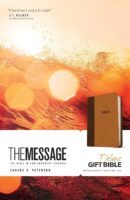
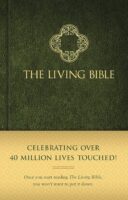 Paraphrases of the Bible are not translations at all. They may be based on a translation, but authors use modern language and modern equivalents that they believe will get the biblical point across. Some of these go pretty far afield from actual bible translations. The Message by Eugene Peterson is probably the most popular and most quoted current paraphrase. It uses modern street language and modern parables. While it is interesting and can be helpful, I would not suggest depending on it for Bible study. Other paraphrases include The Voice and the original Living Bible (not the same as the New Living Translation.) The Living Bible has been around for over 40 years, and I got my leather-bound copy about that long ago. But I confess I now prefer the New Living Translation, an actual translation that appears to be quite accurate.
Paraphrases of the Bible are not translations at all. They may be based on a translation, but authors use modern language and modern equivalents that they believe will get the biblical point across. Some of these go pretty far afield from actual bible translations. The Message by Eugene Peterson is probably the most popular and most quoted current paraphrase. It uses modern street language and modern parables. While it is interesting and can be helpful, I would not suggest depending on it for Bible study. Other paraphrases include The Voice and the original Living Bible (not the same as the New Living Translation.) The Living Bible has been around for over 40 years, and I got my leather-bound copy about that long ago. But I confess I now prefer the New Living Translation, an actual translation that appears to be quite accurate.
Reference Bibles
A Study Bible is not the same as a Reference Bible. A reference Bible should have a lot of cross references, either in a center column, in one margin, or the bottom of each page.. The more cross references, the better. A Study Bible may or may not have cross references. A Reference Bible will always have cross references, but the number of references will vary. Check out the descriptions to compare.
One example of a reference Bible is the ESV Trutone Personal Reference Bible to the left.
Another plan is to read the Bible together with the Conflict of the Ages series, beginning with Patriarchs and Prophets. If cost is an issue and you have good internet access, you can access these online.

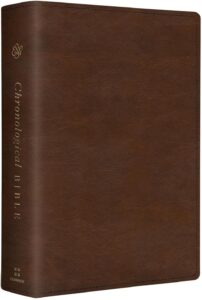
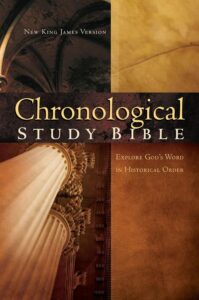
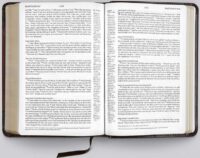
Comments
Chronological Bibles — No Comments
Please make sure you have provided a full name in the "Name" field and a working email address we can use to contact you, if necessary. (Your email address will not be published.)
HTML tags allowed in your comment: <a href="" title=""> <abbr title=""> <acronym title=""> <b> <blockquote cite=""> <cite> <code> <del datetime=""> <em> <i> <q cite=""> <s> <strike> <strong>